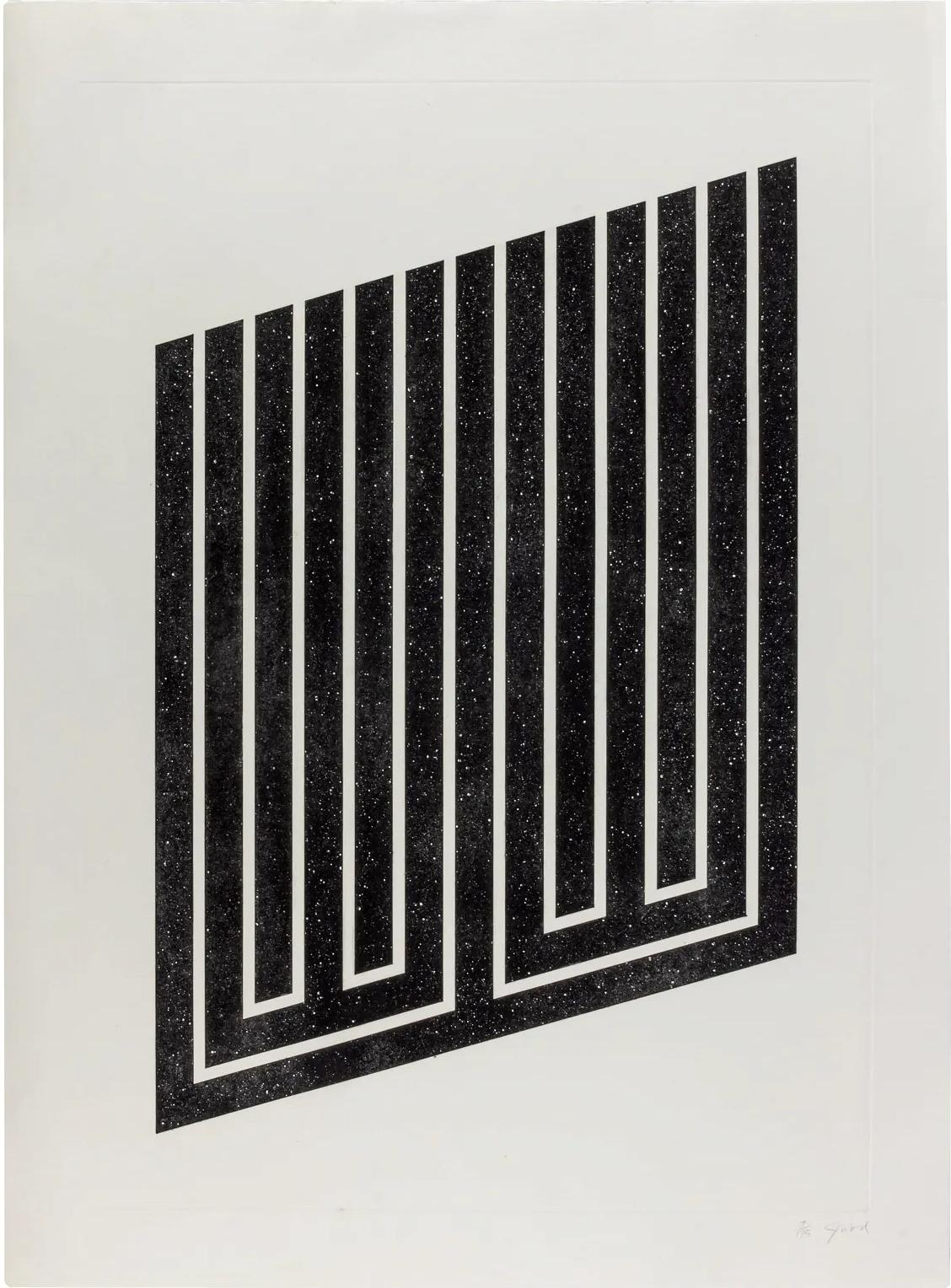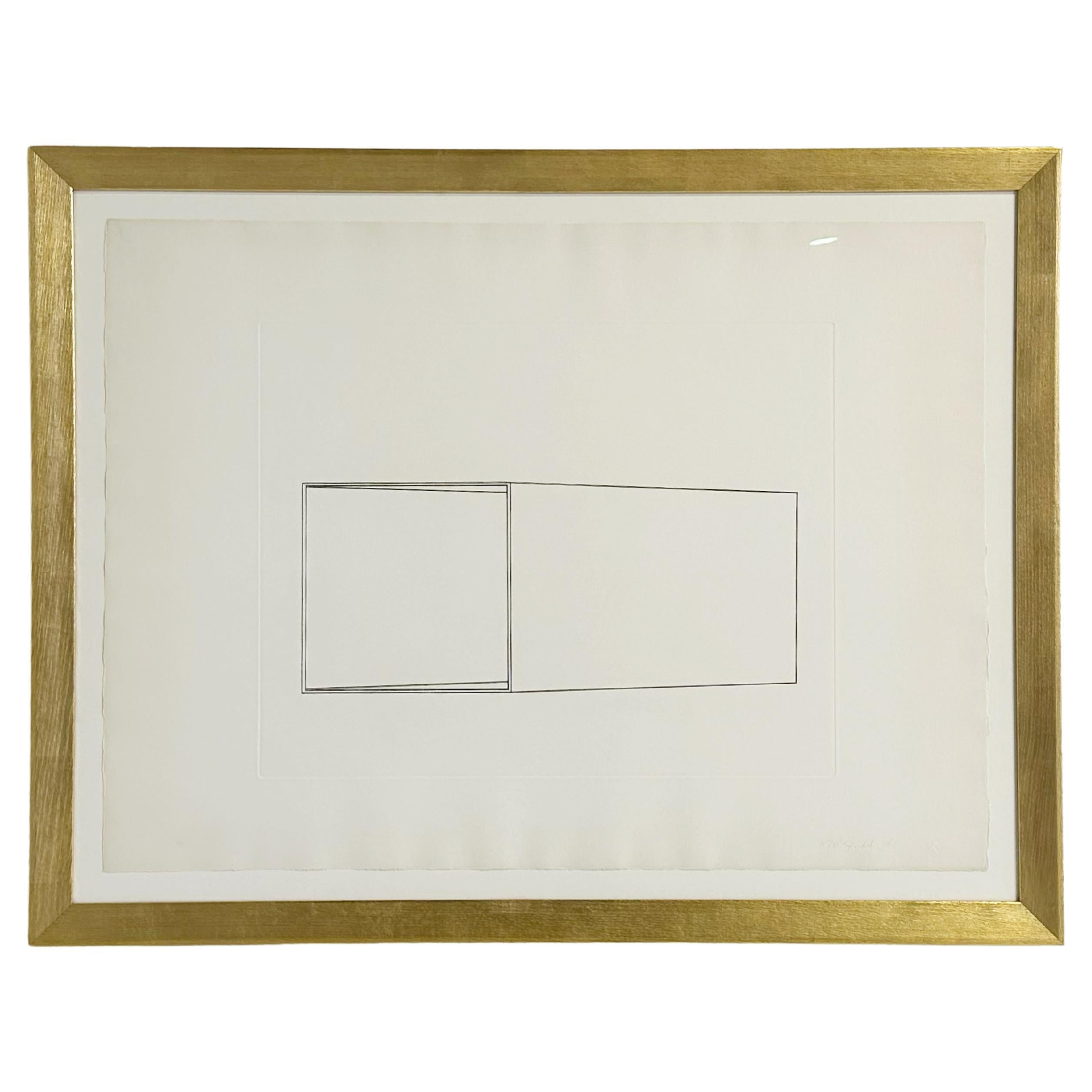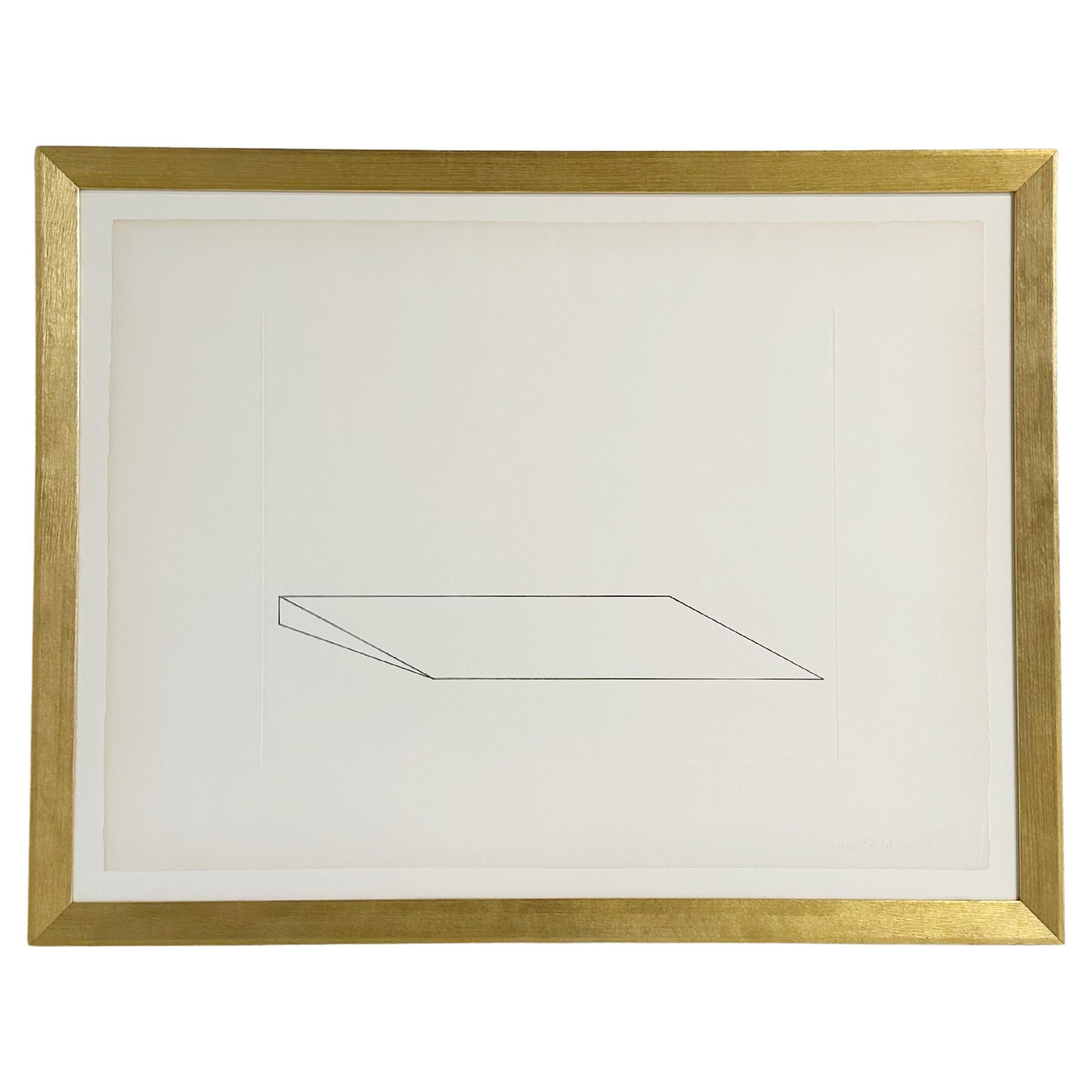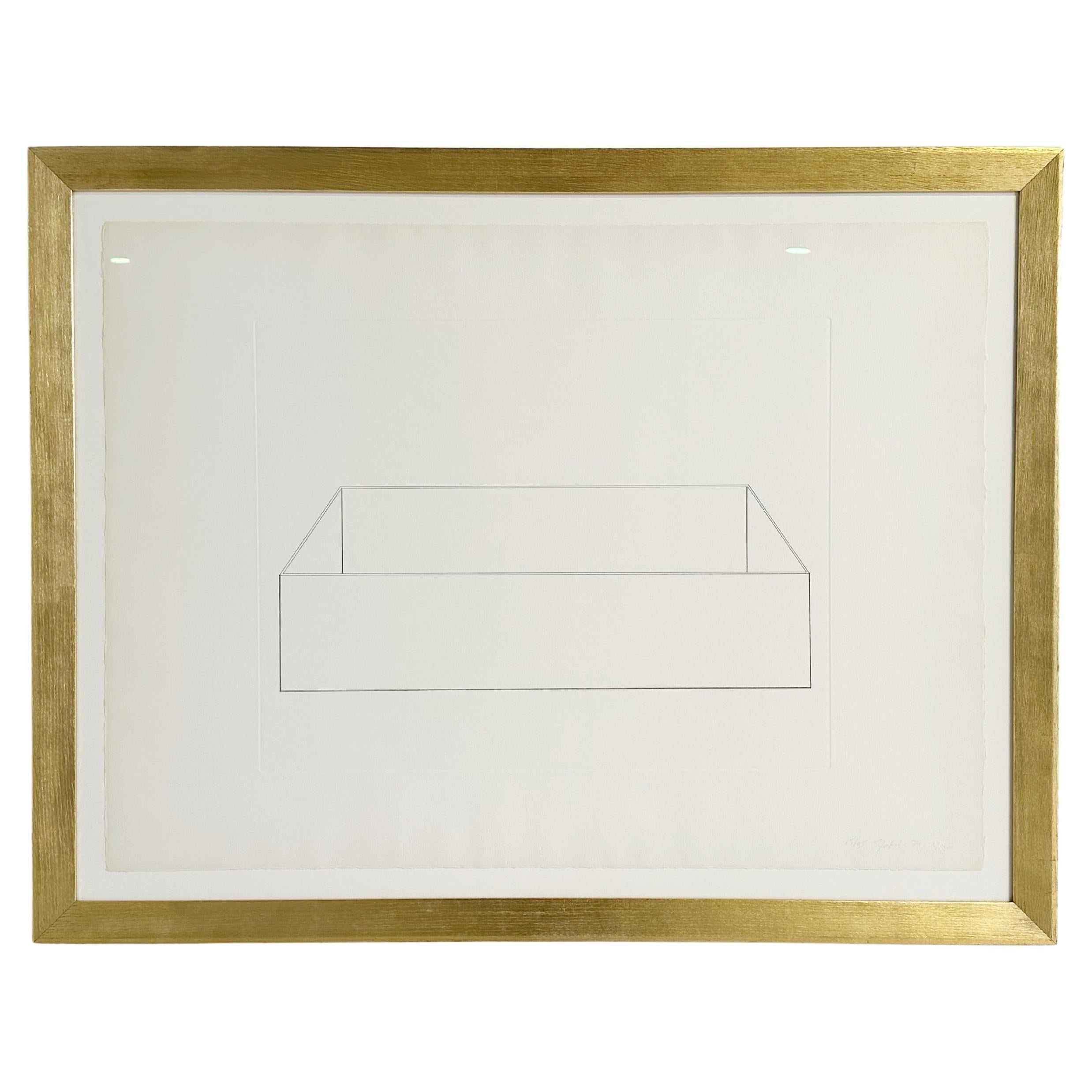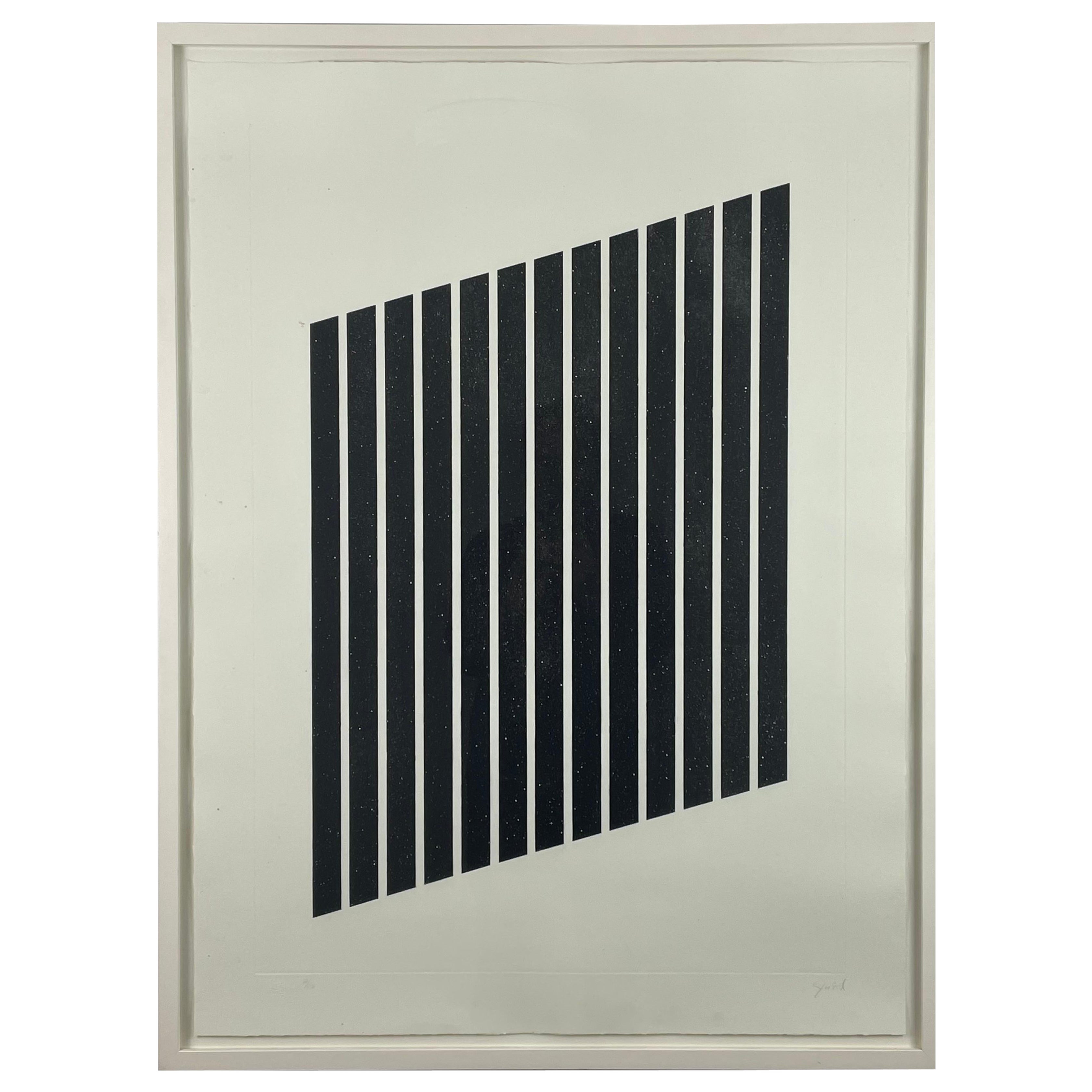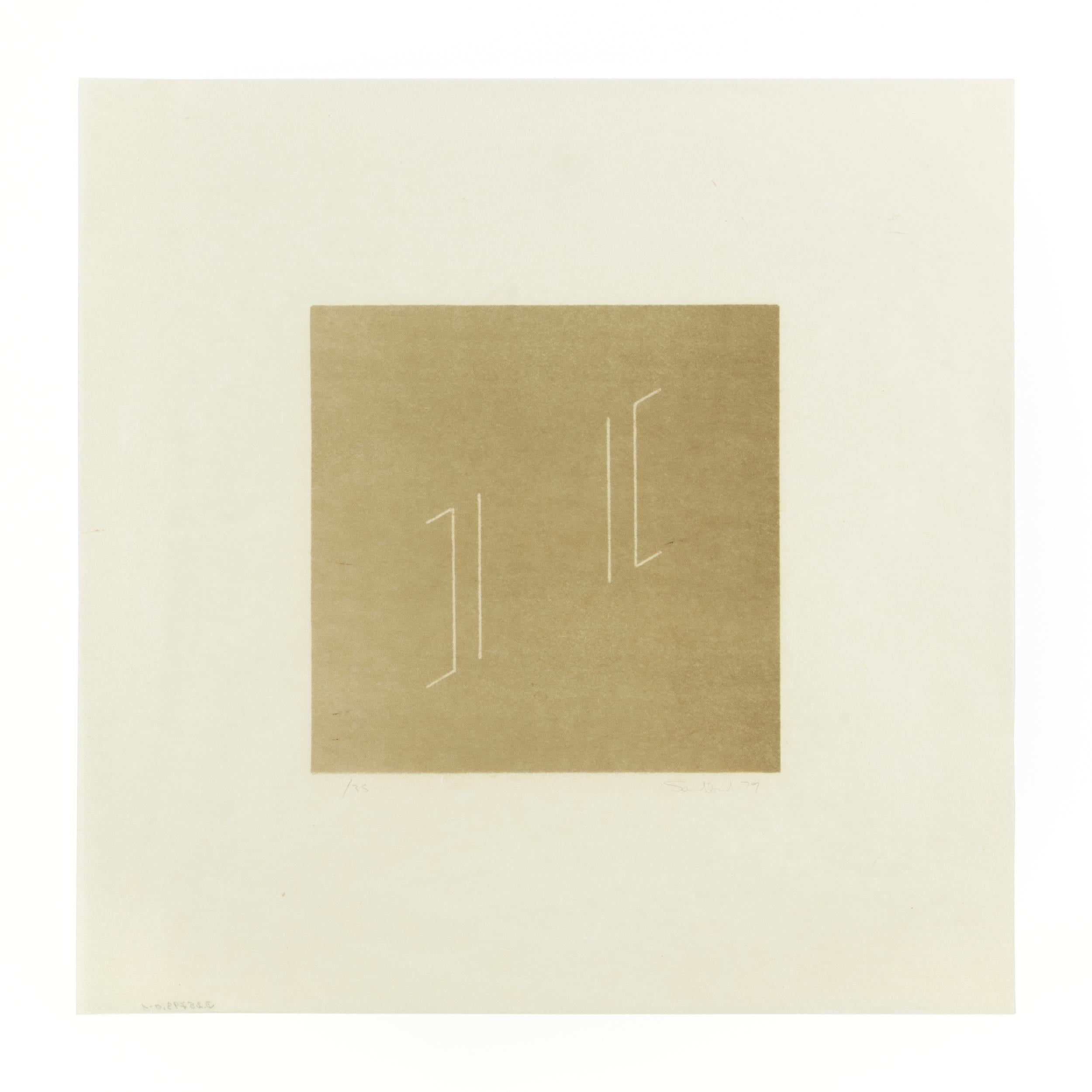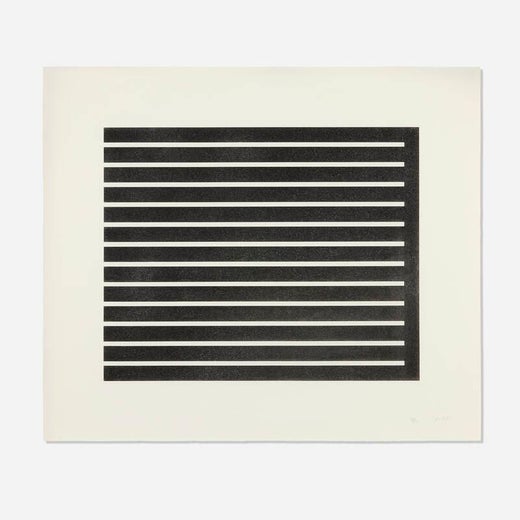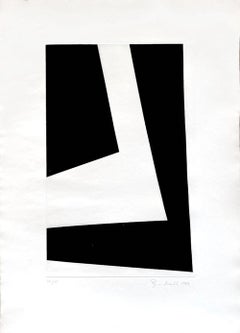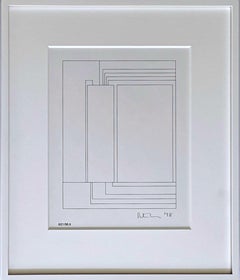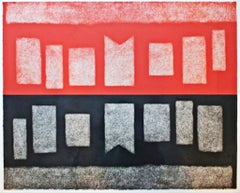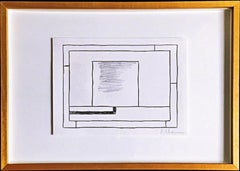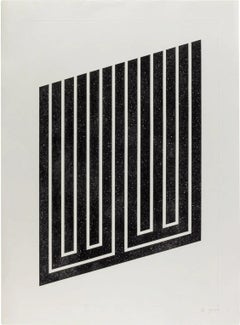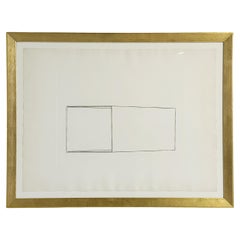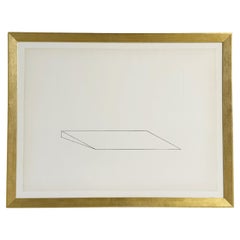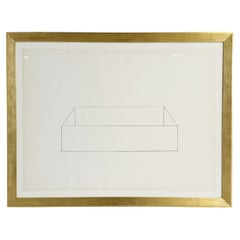Donald JuddSculptor Donald Judd #77, (Schellmann 82) signed/n Minimalist etching, Framed1974
1974
About the Item
- Creator:Donald Judd (1928 - 1994, American)
- Creation Year:1974
- Dimensions:Height: 48.5 in (123.19 cm)Width: 37 in (93.98 cm)Depth: 1 in (2.54 cm)
- Medium:
- Movement & Style:
- Period:
- Condition:Not examined out of vintage frame but print itself appears excellent.
- Gallery Location:New York, NY
- Reference Number:1stDibs: LU1745214896282
Donald Judd
Many consider Donald Judd one of the most influential artists of the 20th century. Three decades after death, his ideas still hold a strong influence in the fields of architecture, interior design, criticism and art.
Judd was the voice of minimalism, rejecting through his art expressions of metaphysical and metaphorical symbolism. He sought to convey the literal, physical characteristics of each project he worked on. Judd's fascination with hard-edged imagery — especially squares and boxes — is prevalent through many of his sculptures, prints and paintings, and perfectly expresses his pragmatic artistic vision.
Even though he was a minimalist in practice, Judd appreciated various forms and styles of art, with a special fondness for Abstract Expressionism. He spent many years writing as an art critic and spoke extensively on behalf of artist culture.
Born in Excelsior Springs, Missouri, Judd joined the U.S. Army in 1946 and served in Korea until 1947. After returning home, he attended Columbia University, where he studied art history and philosophy while concurrently painting at the Art Students League.
Judd continued to paint until the early 1960s, when he abandoned the practice entirely in favor of sculpture. He found painting to be too illusionary and preferred the tactility of working in three dimensions.
As a strong proponent for art permanency, Judd purchased and refurbished many properties in Manhattan from the 1970s to the 1990s — primarily for the purpose of providing space to permanently hold and display his work and that of his colleagues. He obtained buildings throughout the downtown Cast Iron District. Other artists with the means to do so followed suit and helped develop the area, which is now known as SoHo — world-famous for cultivating artistic culture. Judd headed other political actions aimed at fostering artistic community and maintaining a healthy environment throughout New York City, especially in Manhattan.
In 1981, Judd moved with his wife, Julie Finch, to Marfa, Texas, where they established the Chinati Foundation. The 340-acre foundation site holds many of his own permanent installations and those of a number of his contemporaries, including American artists Dan Flavin, Carl Andre and John Wesley, as well as Russian artist Ilya Kabakov and many others.
Judd died from lymphoma in 1994, but a magnificent body of his work remains for all to relish for generations to come.
On 1stDibs, find a selection of Donald Judd abstract prints, interior prints and sculptures.
- ShippingRetrieving quote...Shipping from: New York, NY
- Return Policy
More From This Seller
View All1960s Hard-Edge Abstract Prints
Etching
1990s Abstract Geometric Abstract Drawings and Watercolors
Ink, Graphite
1970s Abstract Abstract Prints
Lithograph
1990s Abstract Geometric Abstract Drawings and Watercolors
Ink, Graphite
Early 2000s Minimalist Abstract Prints
Pencil, Graphite, Inkjet, Etching
1970s Minimalist Abstract Prints
Lithograph
You May Also Like
1970s Minimalist Abstract Prints
Aquatint
Vintage 1970s Prints
Paper
Vintage 1970s Prints
Paper
Vintage 1970s Prints
Paper
Vintage 1970s American Minimalist Prints
Paper
20th Century Abstract Abstract Prints
Lithograph
Read More
10 Must-Visit American Public Sculptures
Get your dose of Vitamin D while surveying works by the likes of Alexander Calder, Keith Haring and Pablo Picasso.
Welcome (Back) to the Wild, Wonderful World of Walasse Ting
Americans are rediscovering the globe-trotting painter and poet, who was connected to all sorts of art movements across a long and varied career.
